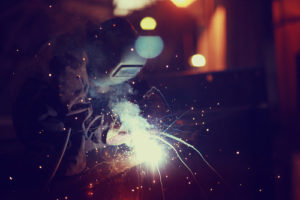
Readily Weldable Castings
Most aluminum casting can be readily welded but die casters take into account two aspects to determine the casting’s joinability. First is the composition of the casting, an object produced by pouring the molten metal into the mold.
Aluminum casting alloys such as 356.0 and 319.0, for instance, are heat-treatable. These alloys can be welded as a base material with aluminum filler alloy 4043 preferably serving as the filter. Other casting alloys such as AlMg 535.0 are not heat-treatable, but they can be welded using filler alloy 5336 serving as the filter.
Another significant aspect that should be considered to determine weldability is the manufacturing method of the casting. Investment, sand and permanent mold castings can be welded in general, since all three methods pour molten aluminum into a mold on relatively low thermal conductivity that slows down the solidification process.
The thermal conductors in the solidification of sand casting, investment casting or permanent mold casting pave way for the molten metal to seep out. When it comes to die casting aluminum, the molten metal is injected into a steel mould with high-pressure. It passes through vents and water cooling passages in the parting lines during the solidification phase.
Since the die-cast part cools down relatively quickly compared to other methods, the dissolved gases in the molten metal cannot escape forming pressurized gas pockets defect in the casting. Typically, welders will not find the gas pockets entrapped as an internal void of the casting while welding and there is little they can do about the defect, except to grind it out and perform a repair weld.
So how does a welder in a small workshop can understand if a casting is an aluminum die casting or not? Firstly, the die-cast surface finishing is smoother compared to other types of castings and secondly, one can see between 4 to 10 ejector pin marks at approximately 1/8 inches diameter on the inner surface and the outer surface of the casting.
When the mold cavity comprising of steel dies open, the pins driven into its rear extend and knocks the casting out of the die without distortions such as bending. The ejector pins do leave a seam line of flash on the aluminum casting. Welding it is possible, but it is something that requires caution.
